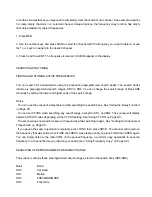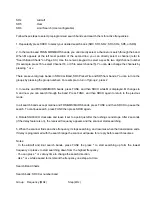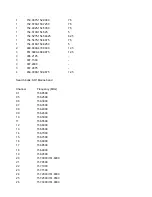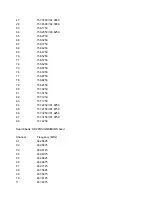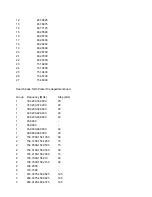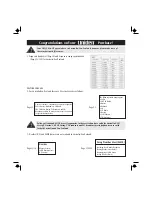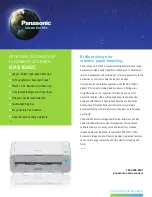
Plug the other end of the DC adapter into your vehicle’s cigarette-lighter socket.
Note: If you use a cigarette-lighter power cable and your vehicle’s engine is running, you might hear electrical
noise from the engine while scanning. This is normal.
CHARGING RECHARGEABLE BATTERIES
Your scanner has a built-in charging circuit that lets you charge rechargeable batteries while they are in the
scanner. To charge rechargeable batteries, you need to use an AC adapter which supplies 6V (RadioShack
Cat. No. 273-1758) or a DC adapter which supplies 10V (RadioShack Cat. No. 273-1859). Connect a size C
Adaptaplug to the adapter’s cable with the tip set to positive then insert the Adaptaplug into the scanner’s
PWR DC 6V jack
Notes
. Do not overcharge Ni-Cd batteries. Overcharging causes them to get hot and shortens their life.
. Ni-Cd batteries last longer and deliver more power if you occasionally let them fully discharge. To do this,
simply use the scanner until B flashes on the display and the scanner beeps. Then fully charge the batteries.
It takes between 14 and 16 hours to recharge Ni-MH or 7 and 8 hours to recharge Ni-Cd batteries that are
fully discharged. You can operate the scanner while recharging the batteries, but charging takes longer.
IMPORTANT!
The EPA certified RBRC® Battery Recycling Seal on the nickel-cadmium (Ni-Cd) battery indicates
RadioShack is voluntarily participating in an industry program to collect and recycle these batteries at the end
of their useful life, when taken out of service in the United States or Canada. The RBRC program provides a
convenient alternative to placing used Ni-Cd batteries into the trash or the municipal waste stream, which
may be illegal in your area. Please call 1-800-THE-SHACK (1-800-843-7422) for information on Ni-Cd battery
recycling and disposal bans/restrictions in your area. RadioShack’s involvement in this program is part of the
company’s commitment to preserving our environment and conserving our natural resources.
CONNECTING AN ANTENNA
Connecting a Supplied Antenna
You must install an antenna before you can operate the scanner.
The supplied stub antenna helps your scanner receive most strong transmissions at events and makes the
scanner easier to carry and use. The supplied flexible antenna provides slightly better reception and helps
your scanner receive strong local signals.
1. Align the slots around the antenna’s connector with the tabs on the antenna jack.

















